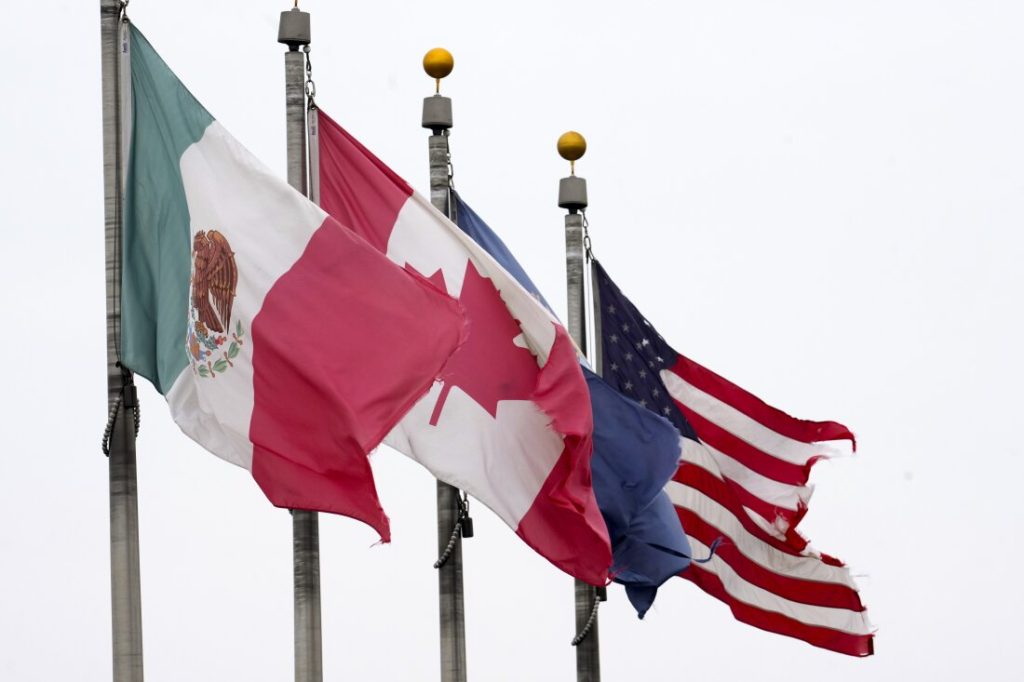The High-Stakes Pricing Challenge for E-Commerce & CPG CEOs
Breaking News: The U.S. has just added new tariffs, and Canada has hit back with its own tariffs. This is happening right now, and businesses are already seeing the effects.
Note: All of the sources are at the end of the blog!
A new wave of tariffs is raising costs across supply chains. If you sell into the U.S. or source from affected countries, you have a tough choice to make:
✅ Pass the cost onto customers? This works like a price increase and might drive them away.
✅ Absorb the cost? This will hurt your profit margins and slow your growth.
For e-commerce and CPG brands, this is a big decision that could impact your growth and future sale of the business.
🔹 How sensitive are your customers to price changes?
🔹 Will they switch to competitors if your costs go up?
🔹 Can your brand handle a drop in demand, or will you struggle?
As a Fractional CFO, I created a Tariff Demand Impact Calculator to help answer these questions. Let’s explore how it works and why understanding price elasticity is key to making smart pricing decisions.
Why Tariffs Can Hurt E-Commerce & CPG Sales
Many e-commerce and CPG businesses think they can pass tariffs onto customers and move on—but that’s risky. Even if you don’t officially raise prices, customers still pay more, and that can drive them away.
What Is Price Elasticity and Why Does It Matter?
Price elasticity of demand (PED) shows how much customer demand changes when prices rise. The formula is:
- Elastic demand (PED < -1): Small price increases (or tariffs passed to customers) lead to large drops in sales. Example: A 10% price hike could cause a 15-30% drop in demand.
- Inelastic demand (PED > -1): Customers keep buying even if prices go up. Example: Apple raises iPhone prices, but people still buy them.
On average, price elasticity across consumer goods is -2.62, meaning demand is very sensitive to price changes. But this varies by industry, brand, and product type.
Which E-Commerce & CPG Brands Are at Risk?
Studies show price sensitivity depends on several key factors:
❌ Lots of competition and substitute products → If customers have more choices, price sensitivity is 50% higher .
❌ Luxury or non-essential items → These products have high price sensitivity (PED between -1.8 and -2.5), meaning even small price increases drive customers away .
❌ Lower-income customers → This group is 30% more price-sensitive, so cost increases hit them the hardest .
❌ Seasonal products → Price sensitivity increases by 0.2–0.4 points during peak shopping seasons .
If your business fits these categories, you must think carefully before passing tariffs onto customers.
How the Tariff Demand Impact Calculator Works
I built this tool to help e-commerce and CPG leaders predict how customers will react to price changes before making a move.
Step 1: Score Your Brand’s Price Sensitivity
Price elasticity depends on factors like:
✅ Brand Strength → Strong brands lose fewer customers when raising prices.
✅ Customer Income Level → A 10% drop in income makes customers more price-sensitive .
✅ Substitutes & Competition → More competitors make customers more likely to switch.
✅ Luxury vs. Necessity → Necessities have low price sensitivity (-0.1 to -0.3), while luxuries have high sensitivity (-1.8 to -2.5).
✅ Seasonality & Durability → Seasonal items see big drops in demand when prices rise.
Step 2: Enter Your Tariff Pass-Through Plan
Choose how much of the tariff to pass to customers—5%? 10%? 15%?
Step 3: Get Your Estimated Demand Drop
The calculator shows how much your sales could drop based on price sensitivity. This helps you avoid surprises before changing prices.
Step 4: Reforecast your Profit and Loss
You now can reforecast your financial plan to see how a reduction in demand and/or the addition of absorbed tariffs has an impact on your bottom line.
If you need help here -> book a call with me to chat about how we can help.
Example: What Happens If You Pass Tariffs to Customers?
📌 Scenario 1: High Price Sensitivity
- A DTC swimwear brand faces the 25% tariff increase.
- They pass 100% of the tariff to customers.
- Elasticity Score: 2.0 (Highly Sensitive).
- Result? Demand could drop 50%.
📌 Scenario 2: Low Price Sensitivity
- A luxury skincare brand with strong customer loyalty.
- Passes 50% of tariff costs to customers.
- Elasticity Score: 0.5 (Less Sensitive).
- Result? Demand only drops 6.25%, and revenue stays strong enough. Though they now have to eat a bunch of duties and taxes.
🔑 Lesson: Even if you just pass along costs, customers feel it like a price increase. The key is knowing whether your brand can handle it.
We can’t just forecast the demand issues as well. We need to reforecast our P&L to see the true impact on margins.
Smart Pricing = Better Business Decisions
💡 A bad pricing decision can cost millions in lost sales.
💡 A smart decision keeps profits strong while keeping customers happy.
🔹 Before you raise prices or pass tariffs to customers, check your price sensitivity.
🔹 Avoid mistakes that hurt your long-term growth.
🔹 Use the Tariff Demand Impact Calculator to see potential demand changes before making a decision.
Try the Calculator Now 🚀
🔥 Want to know how tariffs will impact your sales?
👉 [Use the Tariff Demand Impact Calculator Now]
📊 Or book an Intro Call with us anytime! And if you want to keep learning, read our blog now.
Sources
- Price Elasticity of Demand
- Price Elasticity
- Factors Affecting Price Elasticity of Demand
- Does Price Elasticity Vary with Economic Growth ?
- Determinants of Price Elasticity
- Empirical Generalizations on the Determinants of Price Elasticity
- Assessing Price Elasticity for Private Labels and National Brand

